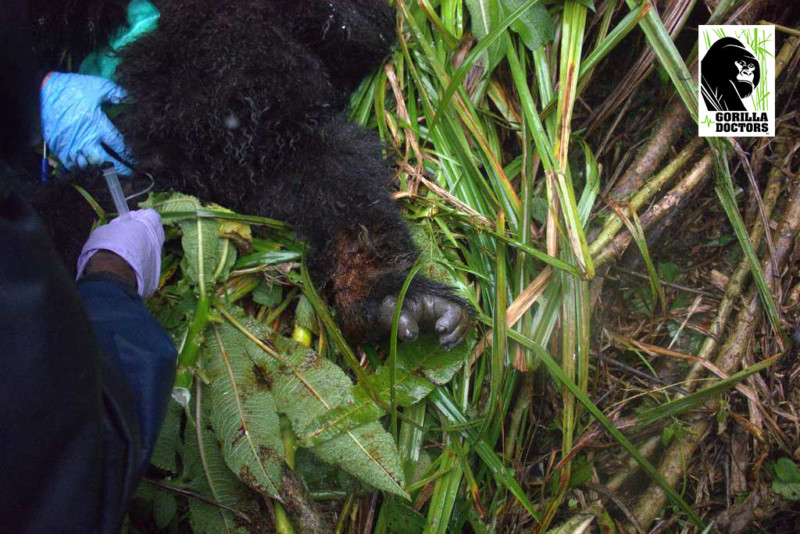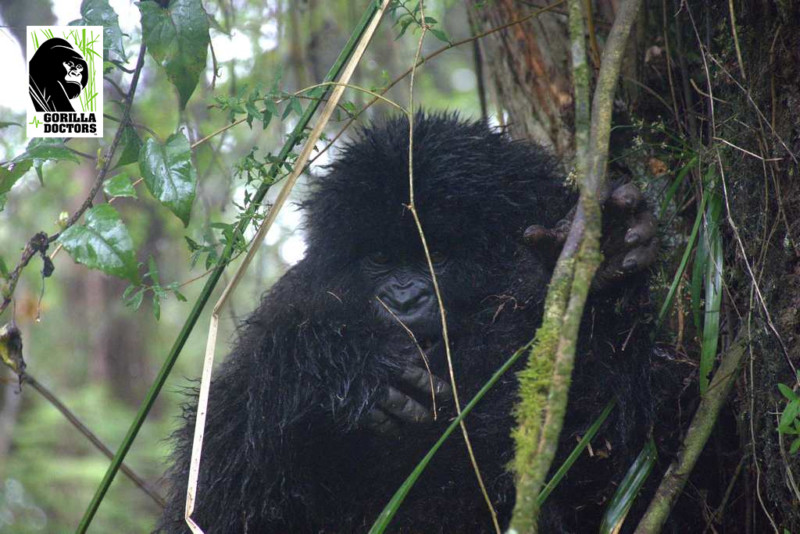Orphan in Isabukuru Group Rescued from a Snare
By Gorilla Doctors Staff on Friday, June 9th, 2017 in Blog.
By Dr. Noel
On April 6, Dian Fossey Gorilla Fund trackers noticed that Fasha, a 4-year old male in the Isabukuru group, was not with the rest of his family. They searched for him and finally found him later that day, more than 1/2 km from his family, with a rope snare around his foot. The trackers cut the rope from the bamboo and Fasha managed to rejoin his group that evening still with the snare tight around his ankle and dragging about 1 meter of rope.
The following day Gorilla Doctors mobilized to conduct a veterinary assessment and snare removal intervention. It was raining when the team found Fasha and his siblings Masunzu and Icyororo resting with the silverback Kubaha, who has taken over leadership of the group following the death of Isabukuru. Fasha was limping and his left foot was visibly swollen, with the rope still tightly wrapped around his ankle.
I darted Fasha with an anesthetic and as soon as she was asleep, we quickly removed the rope snare. I cleaned the wound on Fasha’s ankle with antiseptic solution, and administered antibiotics and painkillers prior to reversing the anesthesia. He woke up just fine from anesthesia and was with his siblings and Kubaha as we trekked out of the forest.
When we returned to do a follow-up check on Fasha’s progress, his wounds were healing but looked like they might still be somewhat infected, so we administered an additional dose of antibiotics as a preventive measure against potential bacterial complications. This seemed to do the trick, as a subsequent monitoring visit by Dr. Gaspard showed that Fasha’s wound were healing well, and Fasha’s activity and feeding behaviors were normal.
This was the first snare removal performed by Gorilla Doctors since the start of the calendar year — ordinarily we would be celebrating having gone so long without a snare, but the truth of the matter is that Gorilla Doctors has had to perform 12 clinical interventions to treat ill gorillas since January 1, which emphasizes the ongoing need for close monitoring of every habituated gorilla and for Gorilla Doctors’ rapid response for delivery of life-saving veterinary care for these endangered animals.


 Donate
Donate

